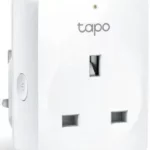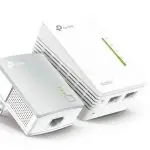

This guide is a complement to Quick Installation Guide. The Quick Installation Guide provides instructions for quick internet setup, while this guide contains details of each function and demonstrates how to configure them in typical scenarios.
When using this guide, please notice that features of the powerline adapter may vary slightly depending on the model and software version you have, and on your location, and language. All images, parameters and descriptions documented in this guide are used for demonstration only.
Conventions
In this guide, the following conventions are used:
| Convention | Description |
| Hyperlinks are in teal and underlined. You can click to redirect to a website or a specific section. | |
| Key information appears in teal, including management page text such as menus, items, buttons and so on. | |
| Ignoring this type of note might result in a malfunction or damage to the device. | |
 Tips: Tips: |
Indicates important information that helps you make better use of your device. |
More Info
- The latest software, management app and utility are available from the at http://www.tp-link.com/support.
- The Quick Installation Guide (QIG) can be found where you find this guide or inside the product package.
- Specifications can be found on the product page at http://www.tp-link.com.
- A Technical Support Forum is provided for you to discuss our products at http://forum.tp-link.com.
- Our Technical Support contact information can be found at the page at http://www.tp-link.com/support.
1
Chapter
This chapter introduces what the powerline adapter can do and describes its appearance.
It contains the following sections:
TP-Link powerline adapter aims to extend your exsiting home network, with the help of your home’s electrical circuit.
The integrated power socket on the powerline adapter provides an outlet for other electronic devices. Its built-in noise filter eliminates electrical signal noise and therefore guarantees the high quality transmission of data via powerline.
Your powerline adapter may differ in appearance slightly from that depicted because of the region and product version.

LEDs indicate the powerline adapter’s working status. For more details, please refer to the following table.
| Name | Status | Indication |
 Power Power |
On/Off | The powerline adapter is on or off. |
| Blinking | Once every second: Pairing is in process. | |
| Once every 15 seconds: Power-Saving Mode* is on. | ||
 Powerline Powerline |
On | The powerline adapter is connected to a powerline network and is in a suitable location. |
| Blinking | The powerline adapter is in a location with a poor signal strength. We recommend trying another wall socket. | |
| Off | The powerline adapter is not connected to any powerline network. | |
 Ethernet Ethernet |
On | The Ethernet port is connected. |
| Off | The Ethernet port is not connected. |
* If the device connected to the adapter is turned off or inactive for more than 5 minutes, the powerline adapter will automatically switch to Power-Saving Mode.
3

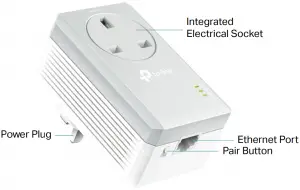
TL-PA4010P TL-PA4020P
Ethernet Port
Connect the Ethernet port to your wired device, such as a computer, a router or a game console, via an Ethernet cable.
Pair Button
Press and hold the button for 1 second to set up or join a powerline network. Go to for more information.
Press and hold the button for more than 6 seconds to reset the powerline adapter to factory defaults.
Power Plug
The powerline adapter has a Plug that can be connected to a power socket.
Integrated Electrical Socket
The integrated electrical socket is a pass-through AC outlet used to power other electronic devices. Its built-in noise filter reduces electrical noise and therefore guarantees performance.
4
Chapter
This chapter guides you on how to use the powerline adapter.
It contains the following sections:
Powerline adapters work in pairs. You should have at least two powerline products to build a powerline network. To optimize your network performance, please follow these principles:
- All powerline adapters should be on the same electrical wiring system.
- Avoid plugging in powerline adapters and high-powered household devices (such as washing machines and refrigerators) close to one another.
- Plug the powerline adapter directly into a wall outlet. Do not plug the powerline adapter into a power strip, extension cord, or surge protector.
 Wall Outlet
Wall Outlet  Power Strip
Power Strip

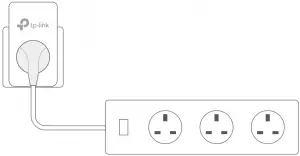
- Use the powerline adapter only in below directions.
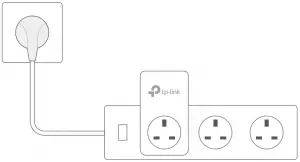

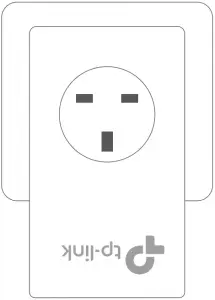

6
I want to: Use two powerline adapters to set up a new powerline network in my house.
I have a router in my house, but there are not enough LAN ports for all my wired devices. I don’t want complex and expensive cabling. People told me that I can solve this problem with two powerline adapters.
How can I do that?
- Connect one of the powerline adapters to an available LAN port of the router using an Ethernet cable.
- Plug the powerline adapter into a wall outlet.
- Plug the other powerline adapter into a wall outlet on the same electrical circuit at the place you want internet. Wait until the powerline LED
 turns on.
turns on.
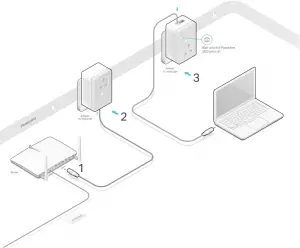 Note: If the Powerilne LED is not solid on, refer to for detailed information.
Note: If the Powerilne LED is not solid on, refer to for detailed information. - Connect your wired device, such as a computer or game console, to the powerline adapter via an Ethernet cable.

Done! Now enjoy the internet!
7
All powerline adapters share some common factory settings, and can communicate with one another. If you want your powerline adpaters to communicate only with your own powerline adapters, you should pair them. Thus a secured powerline network is formed and other powerline adapters can no longer join your powerline network without being paired.
 Note: You can only pair two devices at a time.
Note: You can only pair two devices at a time.
I want to: Secure my powerline network and prevent other powerline devices from being added to my network.
I’ve extended my network using the Plug & Play method. Now I want to secure my network.
How can I do that?
- Verify all powerline devices’ Power LEDs
 are solid on.
are solid on.
 Tips: We recommend that you plug in your powerline devices near each other, or as close to each other as possible when pairing. Your settings will not be affected. The devices can be relocated to where they are needed once pairing is complete.
Tips: We recommend that you plug in your powerline devices near each other, or as close to each other as possible when pairing. Your settings will not be affected. The devices can be relocated to where they are needed once pairing is complete. - Press the Pair button on one of the powerline devices for 1 second. Its Power LED
 starts blinking.
starts blinking. - Within two minutes, press the Pair button on another powerline adapter for 1 second. Its Power LED
 starts blinking. When the Powerline LED
starts blinking. When the Powerline LED  turns on, the pairing process is complete.
turns on, the pairing process is complete.
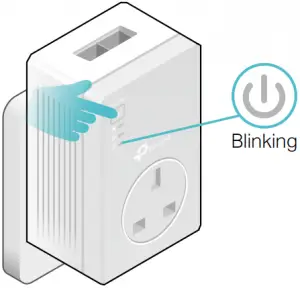

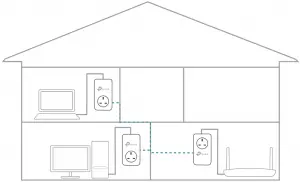
TL-PA4010P TL-PA4020P
Done! Enjoy your secure powerline network!
8
I want to: Add a new powerline adapter into the existing powerline network to extend my network.
I’ve already set up a powerline network using powerline devices, but the network does not reach everywhere I need it to. I purchased another one to further extend my network.
How can I do that?
- Plug the new powerline adapter into a wall outlet near one of the existing powerline devices.

2. Wait for a minute, and check whether the Powerline LED turns on. If it’s on, skip to step 3. If it’s not, continue with step 2 to pair the new powerline adapter into the secured powerline network.
a. Press the Pair button on one of the existing powerline devices for 1 second. Its Power LED  starts blinking.
starts blinking.
b. Within two minutes, press the Pair button on the new powerline adapter for 1 second. Its Power LED  starts blinking. When the Powerline LED
starts blinking. When the Powerline LED  turns on, the pairing process is complete.
turns on, the pairing process is complete.
Existing Powerline Device New Powerline Device



9
3. Relocate the new powerline adapter to the place where wired internet access is needed.

Done! Enjoy the internet through your extended network!
The tpPLC utility enables you to view and manage your TP-Link powerline network. Its bold and intuitive interface helps you easily configure each powerline device.
You can find the utility and its user guide on the product support page at http://www.tp-link.com.
10
Q1. How do I reset my powerline adapter?
With the powerline adapter plugged into the wall socket, press and hold its Pair button for more than 6 seconds until the Power LED  goes off momentarily and comes back on.
goes off momentarily and comes back on.
Q2. What should I do if the Powerline LED  is not solid on?
is not solid on?
If the powerline LED is blinking:
• The powerline adapter is in a location with a poor signal strength. Try another wall socket.
If the powerline LED is off:
• Try another wall socket and make sure all powerline devices are on the same electrical circuit.
• Try to set up a powerline network by pairing. Refer to the section above for instructions.
• If the problem persists, contact our Technical Support.
Q3. How to troubleshoot if there is no internet connection via my powerline network?
• Make sure all powerline devices are on the same electrical circuit.
• Make sure the Powerline LEDs  are lit on all of your powerline devices. If they are not, pair all powerline devices according to .
are lit on all of your powerline devices. If they are not, pair all powerline devices according to .
• Make sure all devices are correctly and securely connected.
• Verify that you have an internet connection by connecting your computer directly to the modem or the router.
Q4. What can I do if a successfully-paired powerline device does not reconnect after it has been moved to a new location ?
• Try another socket on the same electrical circuit.
• Try to pair it again, and make sure the Powerline LED  is on.
is on.
• Check for possible interference due to washing machines, air conditioners or other household appliances. Some powerline devices have an integrated electrical socket. You can plug appliances into this socket to remove the electrical noise originating from them, using a power strip if necessary.
11
COPYRIGHT and TRADEMARKS
Specifications are subject to change without notice.  is a registered trademark of TP-Link Technologies Co., Ltd. Other brands and product names are trademarks or registered trademarks of their respective holders.
is a registered trademark of TP-Link Technologies Co., Ltd. Other brands and product names are trademarks or registered trademarks of their respective holders.
No part of the specifications may be reproduced in any form or by any means or used to make any derivative such as translation, transformation, or adaptation without permission from TP-Link Technologies Co., Ltd. Copyright © 2018 TP-Link Technologies Co., Ltd. All rights reserved.
12
FCC compliance information statement
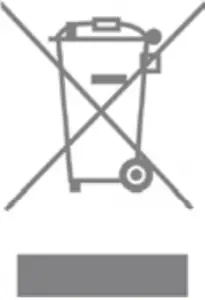
Product Name: AV600 2-port Passthrough Powerline Starter Kit
Model Number: TL-PA4022P KIT (TL-PA4010P+TL-PA4020P)
Responsible party:
TP-Link USA Corporation, d/b/a TP-Link North America, Inc
Address: 145 South State College Blvd. Suite 400, Brea, CA 92821
Website: http://www.tp-link.com/us/
Tel: +1 626 333 0234
Fax: +1 909 527 6803
E-mail: [email protected]
This equipment has been tested and found to comply with the limits for a Class B digital device, pursuant to part 15 of the FCC Rules. These limits are designed to provide reasonable protection against harmful interference in a residential installation. This equipment generates, uses and can radiate radio frequency energy and, if not installed and used in accordance with the instructions, may cause harmful interference to radio communications. However, there is no guarantee that interference will not occur in a particular installation. If this equipment does cause harmful interference to radio or television reception, which can be determined by turning the equipment off and on, the user is encouraged to try to correct the interference by one or more of the following measures:
- Reorient or relocate the receiving antenna.
- Increase the separation between the equipment and receiver.
- Connect the equipment into an outlet on a circuit different from that to which the receiver is connected.
- Consult the dealer or an experienced radio/ TV technician for help.
This device complies with part 15 of the FCC Rules. Operation is subject to the following two conditions:
1) This device may not cause harmful interference.
2) This device must accept any interference received, including interference that may cause undesired operation.
Any changes or modifications not expressly approved by the party responsible for compliance could void the user’s authority to operate the equipment.
We, TP-Link USA Corporation, has determined that the equipment shown as above has been shown to comply with the applicable technical standards, FCC part 15. There is no unauthorized change is made in the equipment and the equipment is properly maintained and operated.
Issue Date: 2018.4.1
13
CE Mark Warning

This is a class B product. In a domestic environment, this product may cause radio interference, in which case the user may be required to take adequate measures.
EU Declaration of Conformity
TP-Link hereby declares that the device is in compliance with the essential requirements and other relevant provisions of directives 2014/30/EU, 2014/35/EU, 2009/125/EC and 2011/65/EU.
The original EU declaration of conformity may be found at http://www.tp-link.com/en/ce
Canadian Compliance Statement
This device complies with Industry Canada license-exempt RSSs. Operation is subject to the following two conditions:
1) This device may not cause interference, and
2) This device must accept any interference, including interference that may cause undesired operation of the device.
Industry Canada Statement
CAN ICES-3(B)/NMB-3(B)
CAN ICES-6/NMB-6
Korea Warning Statements
BSMI Notice
14


Safety Information
- Keep the device away from water, fire, humidity or hot environments.
- Do not attempt to disassemble, repair, or modify the device.
- The socket-outlet shall be installed near the equipment and shall be easily accessible.
 For passthrough devices, plug the power strips into the integrated electrical sockets of the devices, but devices of the same or another type not be stacked in normal use.
For passthrough devices, plug the power strips into the integrated electrical sockets of the devices, but devices of the same or another type not be stacked in normal use.- Plug the powerline devices directly into the wall outlets but not the power strips.
Please read and follow the above safety information when operating the device. We cannot guarantee that no accidents or damage will occur due to improper use of the device. Please use this product with care and operate at your own risk.
Explanation of the symbols on the product label
| Symbol | Explanation |
 |
Class II equipment |
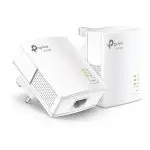 |
AC voltage |
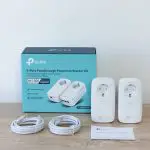 |
Indoor use only |
 |
Protection earth |
 |
RECYCLING
This product bears the selective sorting symbol for Waste electrical and electronic equipment (WEEE). This means that this product must be handled pursuant to European directive 2012/19/EU in order to be recycled or dismantled to minimize its impact on the environment. User has the choice to give his product to a competent recycling organization or to the retailer when he buys a new electrical or electronic equipment. |
16
